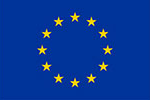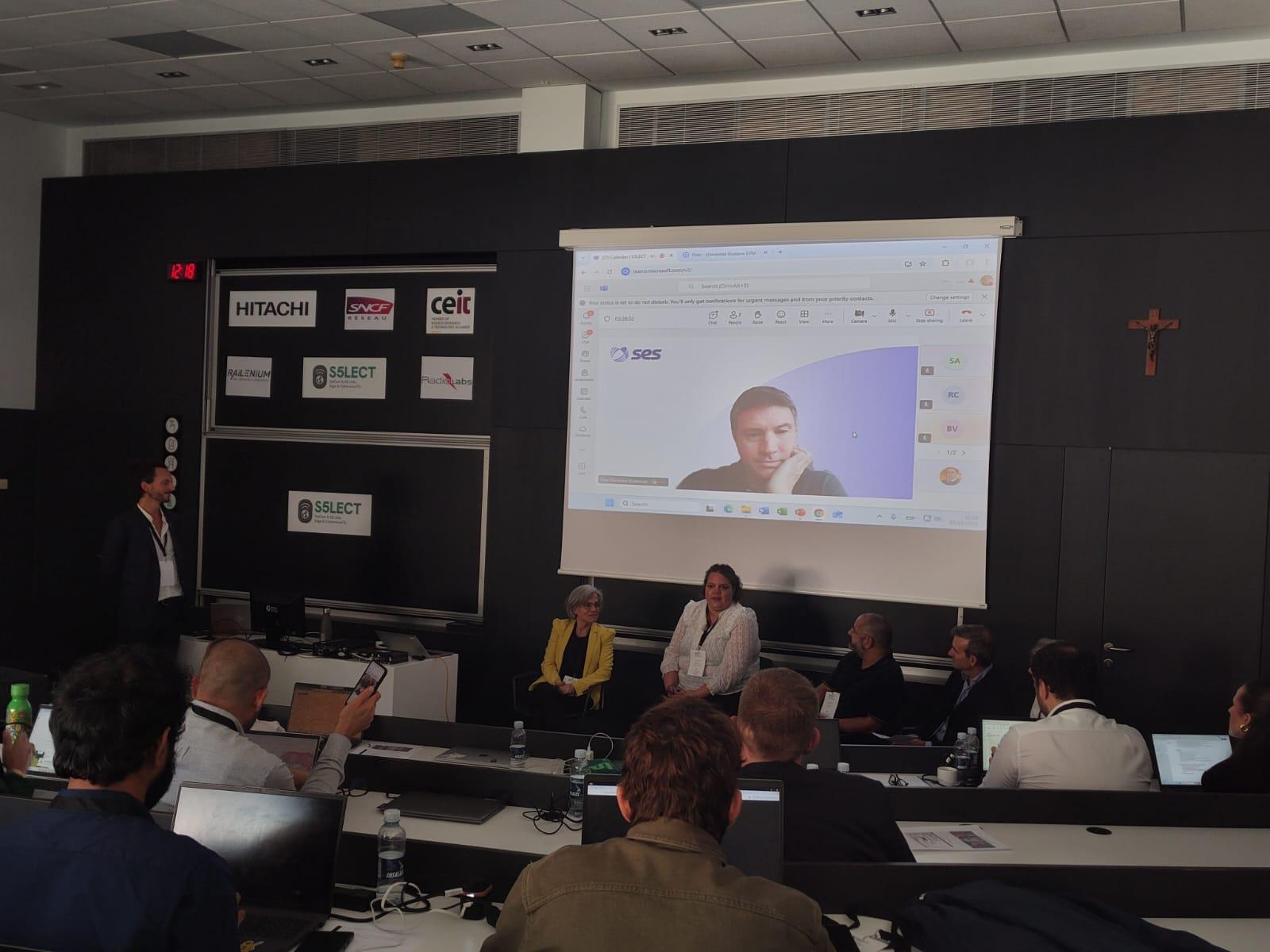Among the nine major Flagship Projects (FPs) funded by Europe’s Rail Joint Undertaking (EU-Rail), FP2-R2DATO plays a...
Discover what’s new across Europe’s Rail projects this month.
From technical milestones to partnership highlights, the Flagship and Exploratory Projects continue to drive forward innovation in the European rail sector. Below, you will find the latest updates from September, showcasing progress, collaboration and the steps being taken toward a more integrated, sustainable and efficient rail system across Europe.
7th SmartRaCon Scientific Seminar explores the European Rail Research & Innovations
On 16 October, EU-Rail member DLR hosted the 7th SmartRaCon Scientific Seminar in Stuttgart, Germany.
EU-Rail’s Head of the Innovation Pillar, Nicolas Furio, delivered a keynote highlighting the latest EU-Rail R&I activities, Flagship Projects, new opportunities from the EU-Rail Call 2025-2 and the strategic vision of EU-Rail.
The Smart Rail Control Scientific Seminars (SRC-SS) provide a platform for sharing scientific research and fostering expert dialogue around the outcomes of EU-Rail, Shift2Rail and related R&I initiatives. Topics included traffic management and digital automatic train operation, digital automatic train operation over new propulsion systems and innovative transport concepts such as pod-based and maglev-derived systems.
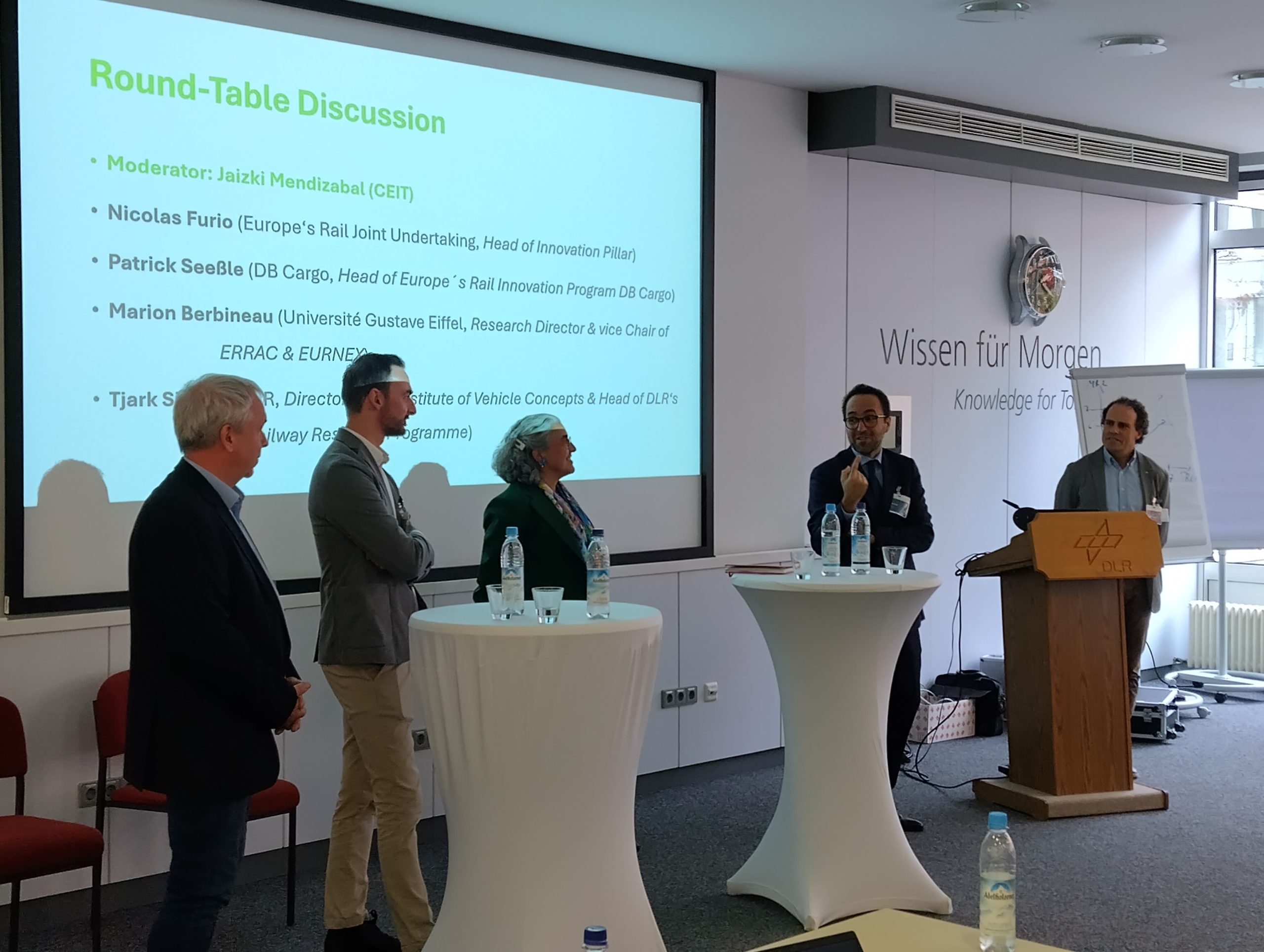
EU-Rai Explores Satellite Communication for Smarter Railways at the S5LECT Project Mid-Term Event
On 22-23 October, EU-Rail Senior Programme Manager Lea Paties took part in a panel discussion titled “What role for satellite communication for train operation and protection?” at the S5LECT project Mid-Term Event, hosted by CEIT in San Sebastian, Spain.
The S5LECT project (SatCom and 5G Link, Edge and Cybersecurity) aims to enhance railway signalling, automation, and traffic management through the integration of satellite communications, 5G, edge computing and cybersecurity technologies.
The event provided an opportunity to discuss the potential benefits of satellite communication for railway signalling, its contribution to the long-term evolution of FRMCS capabilities, and synergies with the EU-Rail programme.
MORANE-2 highlights progress and upcoming milestones at the Global FRMCS Conference
Our EU-Rail FP2-MORANE-2 project was presented at the 4th Global FRMCS Conference, held at UIC headquarters in Paris on 14–15 October, with over 300 participants in attendance.
During the session, speakers including Léa Paties (EU-Rail), Dan Mandoc (UIC), Vassiliki Nikolopoulou (UIC), Jose Eugenio Bertolin Corisco (UNIFE), Laurent Friry (Ericsson Telecommunications Inc.), and Mats Malmström (Trafikverket) outlined the current progress and upcoming milestones.
The project is advancing into implementation, with real equipment already being demonstrated and comprehensive field-testing preparations underway to support the validation of FRMCS v2 across Europe.
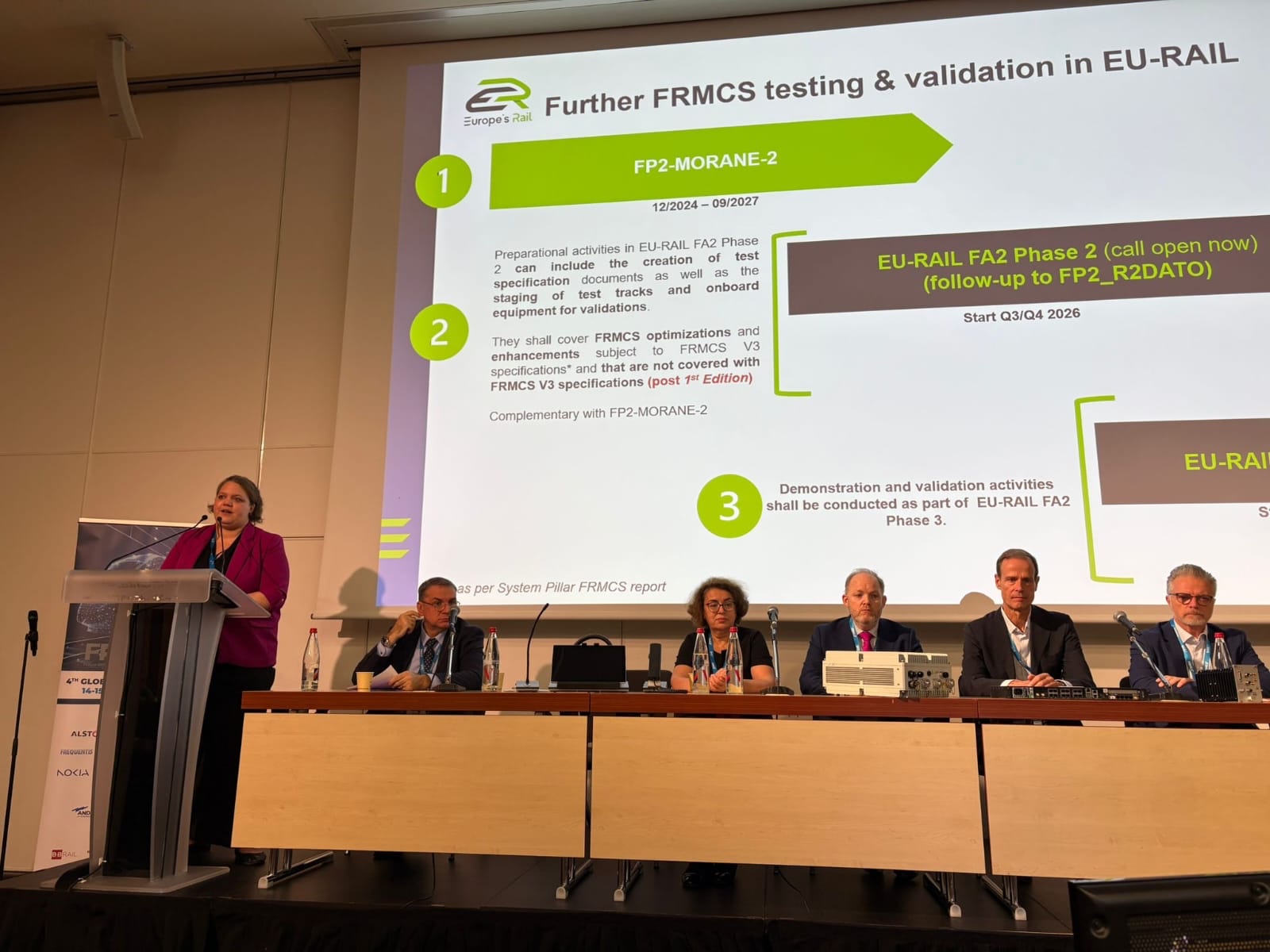
EU-Rail project FP3-IAM4RAIL will participate in the launch of the Arctic Test Arena in Narvik, Norway, on 4–5 November 2025. This facility, developed through cross-border collaboration, is designed for large-scale, real-world testing of railway technologies in Arctic conditions.
The event will begin on 4 November 2025 at 08:45 with an Official Launch Ceremony at Narvik Station, featuring welcome remarks from Sébastien Denis, Senior Programme Manager at EU-Rail, alongside representatives from the Norwegian Railway Directorate, Bane NOR, Trafikverket, UiT, SINTEF, JVTC, and LTU.
At 09:00, participants will depart aboard the Arctic Innovation Train for an immersive technical journey showcasing real-world test activities. These will include monitoring of concrete bridges and transition zones as part of EU-Rail FP3-IAM4RAIL project, technologies for winter operations and cold climate performance, heavy haul solutions in harsh conditions and digitalisation projects for railway assets, operations and maintenance.

Smarter Railway Bridges Through Sensor-Based Monitoring
As part of our IAM4RAIL project, EU-Rail members Trafikverket and Adif, together with the Royal Institute of Technology (KTH) are collaborating to improve the proactive maintenance of railway bridges through sensor-based monitoring.
The project focuses on measuring the dynamic response of bridges (how they sway when trains pass, particularly on high-speed lines) to better understand structural behaviour and reduce maintenance costs.
Data collected from over 1,700 train passages since September 2025 is analysed and made available through a monitoring platform developed by the Swedish company IoTBridge in collaboration with KTH. The findings aim to support more data-driven maintenance practices and inform future bridge design standards.
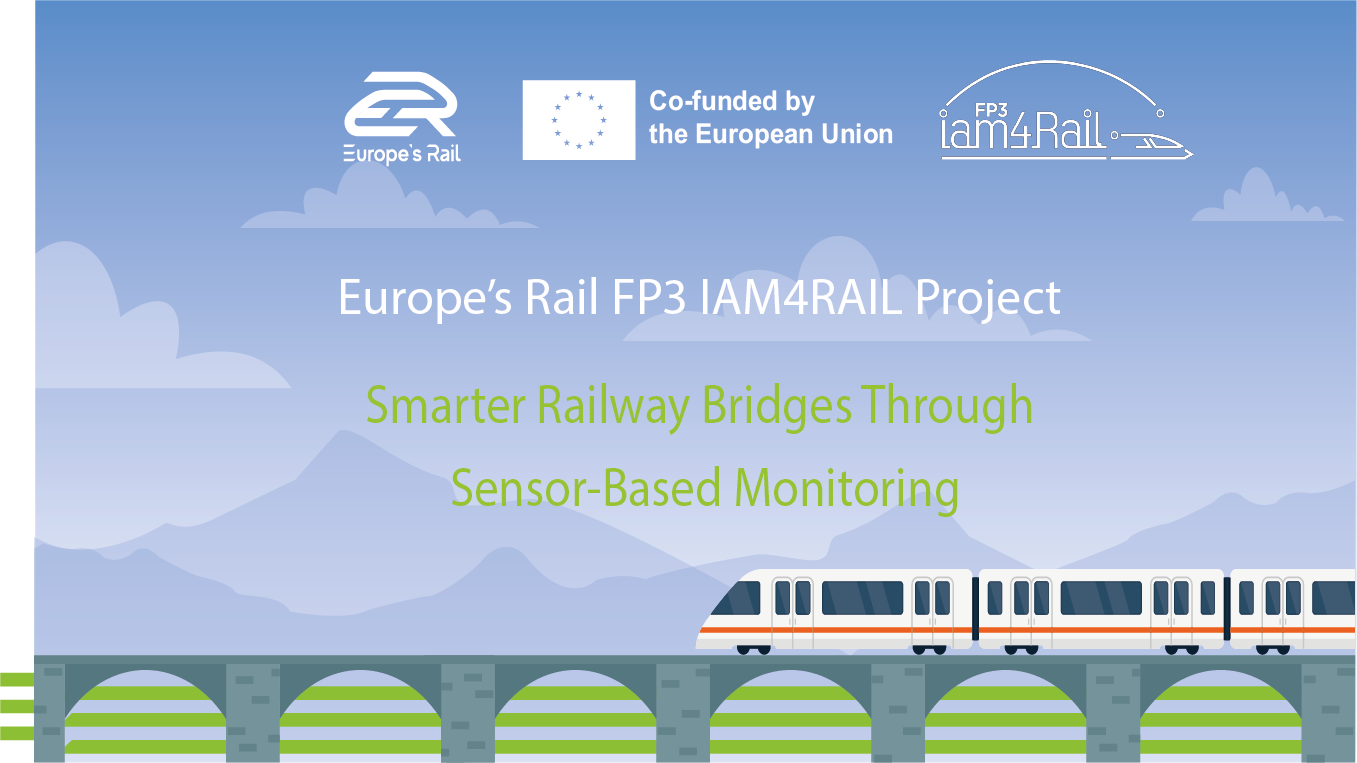
PKP S.A. Showcases Project Innovations at TRAKO 2025
During the TRAKO 2025 International Railway Fair on 23 September, EU-Rail member PKP S.A. presented a series of innovative demonstrations developed under our EU-Rail FP4-Rail4EARTH project. These solutions were created in collaboration with affiliated entities within PKP’s research and development ecosystem.
- A green modular station concept, with a physical model and a virtual reality tour experience.
- A wall cross-section of the station, displaying structural layers using materials developed in the project, which will be used to build the modular station.
- A 1:1 scale model of an interoperable hydrogen refuelling interface, together with a data exchange module.
Modular train station and 1:1 scale model of an interoperable hydrogen refuelling interface mock-ups was presented on PKP S.A. exhibition stand.
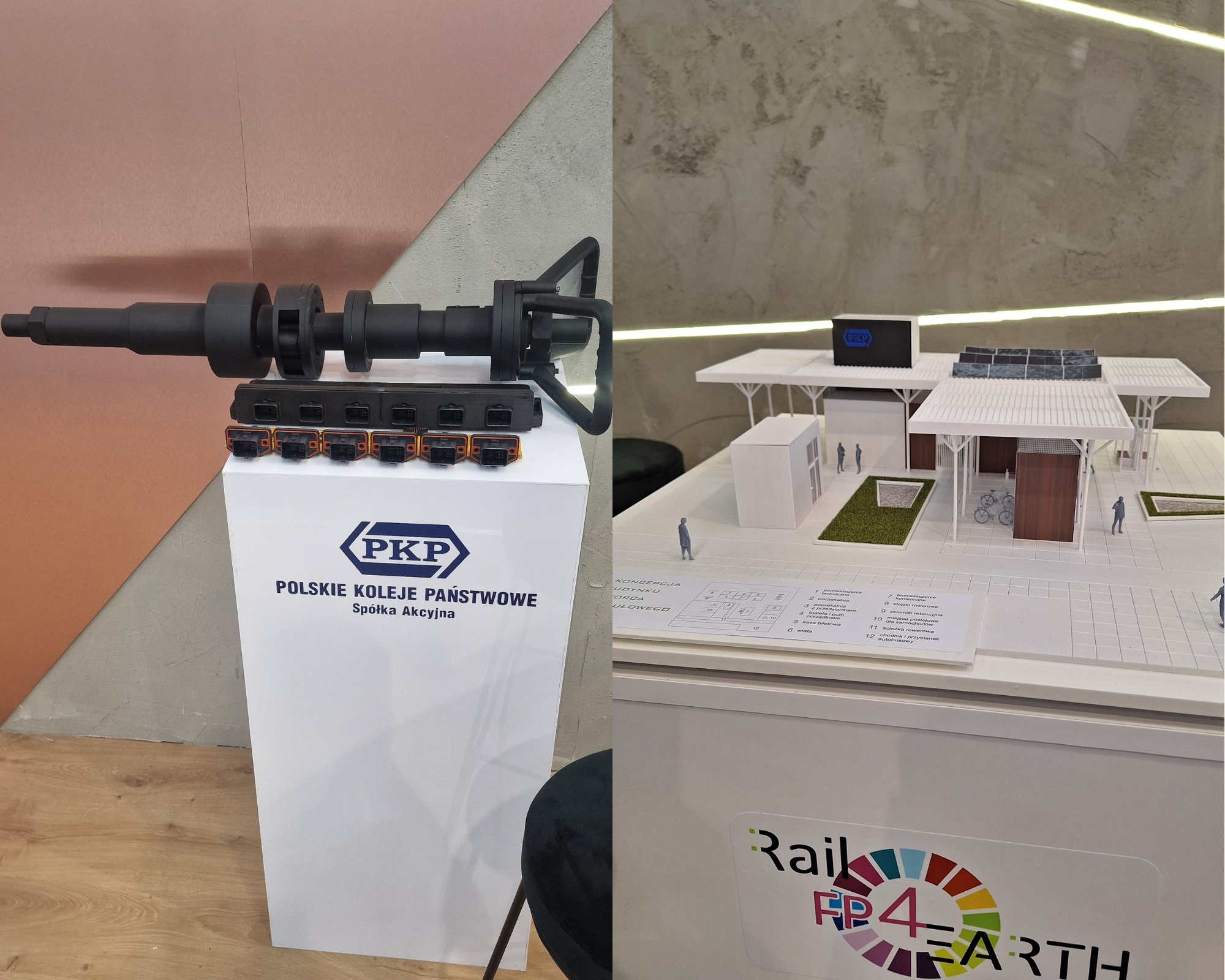
On 25 September 2025, our EU-Rail SYMBIOSIS project held its first online Stakeholder Engagement Workshop, bringing together over 60 participants from across sectors to explore how biodiversity can be better integrated into transport and energy infrastructure. With 22 partners from 13 countries, SYMBIOSIS is focused on three strategic objectives:
• Underline key enablers in policy, finance and reporting
• Deliver practical tools that embed biodiversity into infrastructure planning
• Convene communities of practice to harmonise data and share knowledge
The workshop reaffirmed the importance of broad stakeholder collaboration to make transport infrastructure sustainable and biodiversity-friendly.
On 27–28 October, our EU-Rail Project LEADER 2030 organised the Innovation Train Journey & Rolling Conference from Florence to Dresden, an innovative travelling discussion format that brought together entrepreneurs from the rail sector, public administrators and members of the Parliament.
The programme included:
- Panel sessions aboard the High-Speed Train AV8502 (Florence–Bolzano, Italy)
- A field visit to the Brenner Base Tunnel construction site (Fortezza, Italy)
- Onboard discussions from Bolzano (Italy) to Munich and Dresden (Germany)
- A visit to the “Infineon Technologies” semiconductor factory in Dresden
- A final joint conference co-organised with the IDEALIST project at Schloss Pillnitz, Dresden
Discussions focused on key findings from LEADER 2030, in particular the availability of critical raw materials and industrial capacity needed to support future rail innovation. The project aims to assess the expected availability of raw materials and components required to bring to market by 2030 the rail innovations currently being developed under the EU-Rail programme.
The journey connected Tuscany and Saxony, two industrially vibrant regions linked within the TEN-T Scandinavian–Mediterranean Corridor, offering a unique opportunity to strengthen cross-sector value chain integration and cooperation.
On October 14, our EU-Rail Hyper4Rail project consortium organised a roundtable event in Amsterdam, the Netherlands, titled “Advancing rail: Hyperloop design and feasibility in Europe.” The session featured presentations by hyperloop developers and a hybrid panel discussion involving stakeholders from the rail and hyperloop sectors.
Topics included hyperloop’s strategic potential in Europe, its role in enhancing connectivity and sustainability, and the major challenges to implementation, spanning funding, regulation and technology.
The discussion helped shape key directions for a European hyperloop implementation roadmap and guides the next stages of the Hyper4Rail research project.
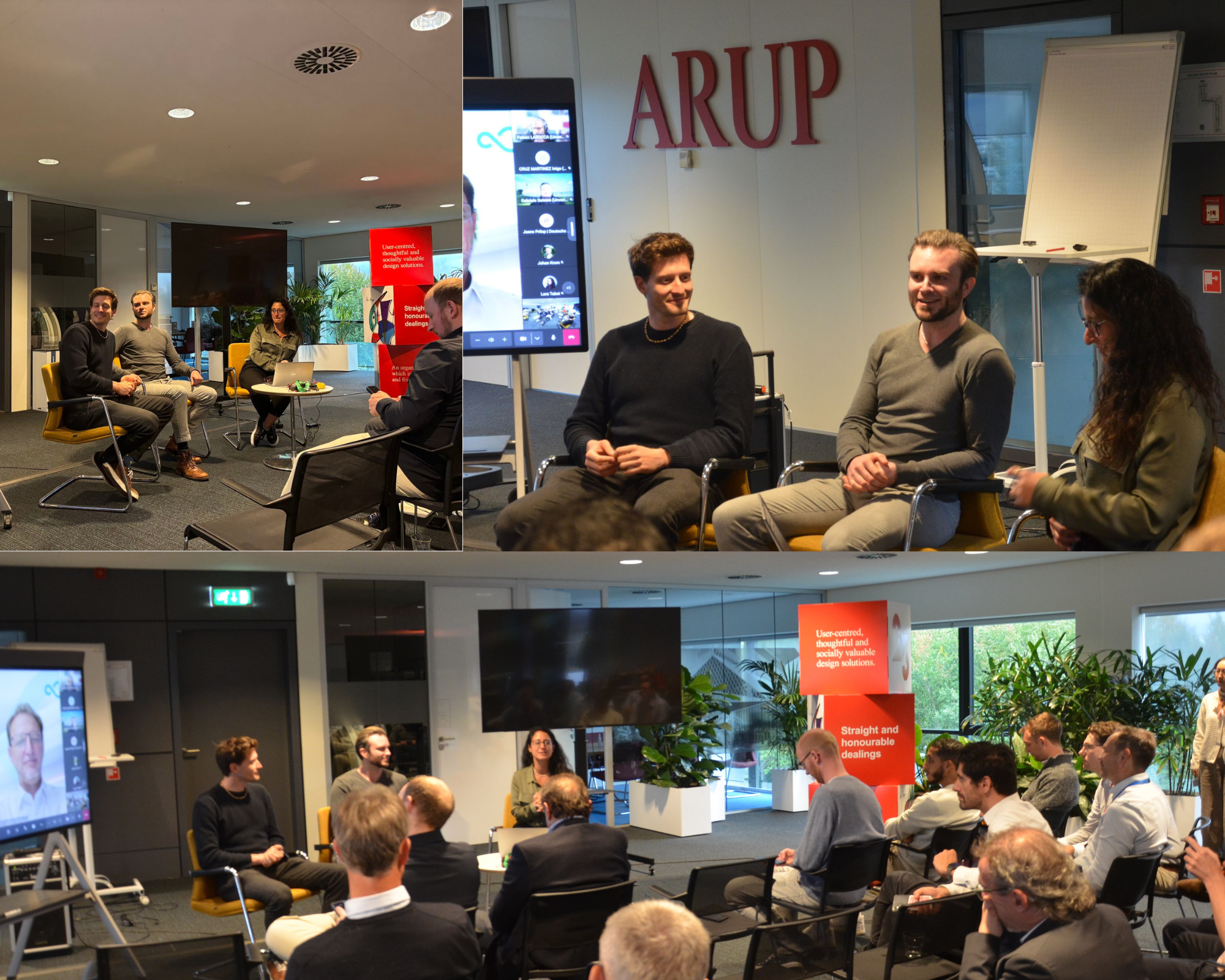
On September 30 and October 1, our EU-Rail InBridge4EU project consortium convened at UPM (Madrid) for its fourth Regular Technical Meeting.
The two-day event brought together project partners, Advisory Board members and EU-Rail representatives for detailed discussions across five Work Packages. Day one featured analysis of new train categories and their implications for bridge design by Pedro Jorge (HUD) and Pedro Museros (UPV), followed by Maria Dolores Martínez Rodrigo (UJI) discussing a comprehensive bridge database analysis. Andreas Andersson (KTH) contributed insights on dynamic amplification factors and modelling strategies.
On day two, Pedro Montenegro (UPORTO) proposed Recommendations for composite and steel bridge classification, while Matthias Baeßler (BAM) reported on ballasted track bridge research and experimental validation.
The meeting reinforced the project’s collaborative foundation and its commitment to innovation in railway bridge design.
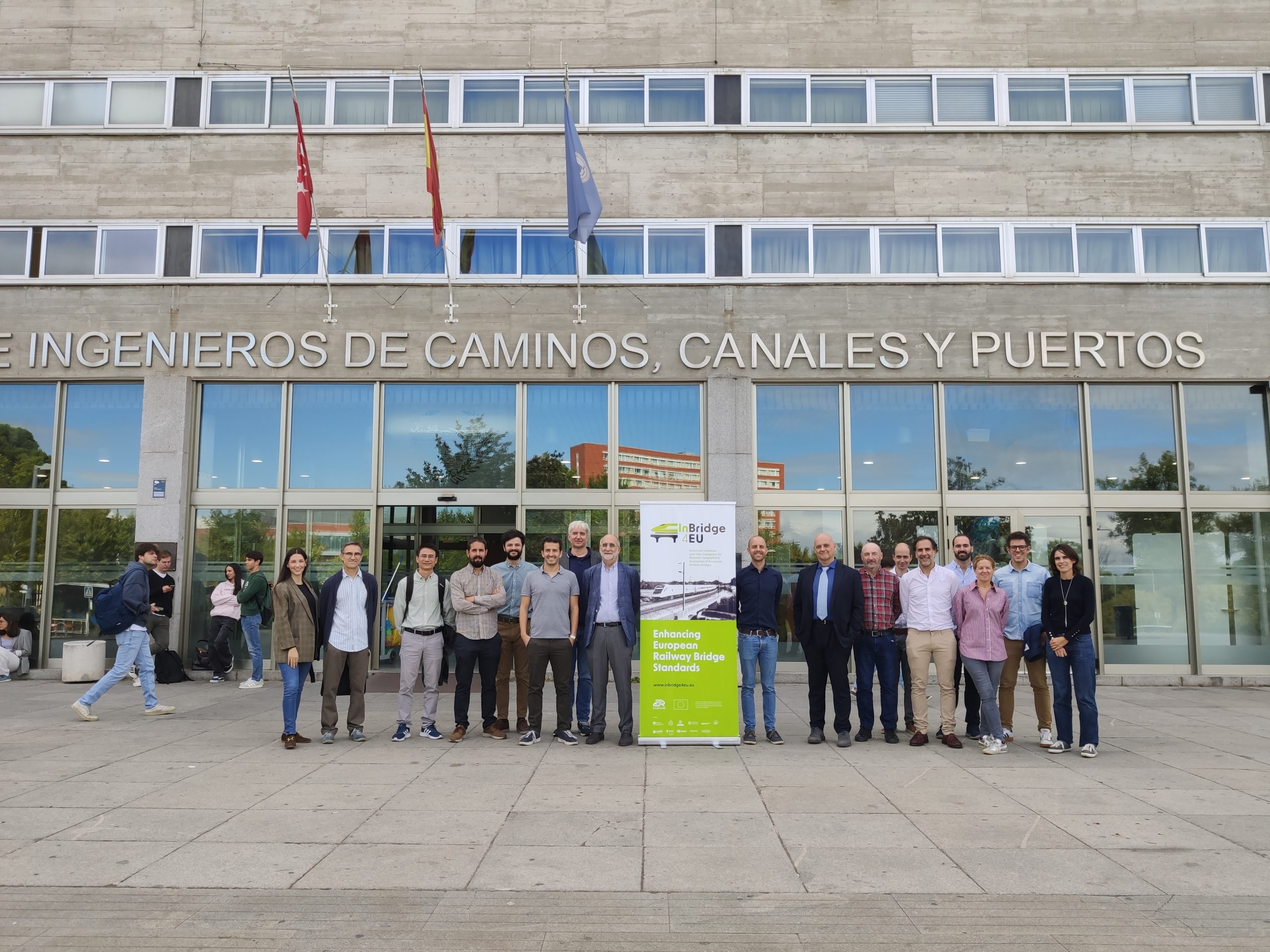
The annual EU-Rail/SESAR Travel Wise project meeting successfully brought together all partners to further define the Travel Wise solution and its key features.
On day one, updates from the first year of the project were shared, with a significant milestone being the alignment on common assumptions and terminology.
Day two focused on a collaborative workshop to define the Travel Wise operating environment. Partners mapped out the flow of actions, identified involved operators and clarified the data exchange needs between different transport modes. Input from members and the Advisory Board enriched the discussions.
The meeting’s outcomes provide a clear framework for the Travel Wise solution, setting the stage for the next phase, where partners will begin to turn these concepts into actionable demonstrations. The work done during this meeting represents a key step toward achieving a seamless, data-driven and sustainable multimodal travel ecosystem.
